
- Home
- Workshops / Tours
- Diary / Blog
- Galleries
- Foreign Trips
- Tasmania 2016
- NE Queensland 2016
- Western Alps 2016
- NE Spain 2016
- Australia's Wet Tropics 2015
- Australia's Top End 2015
- SW Australia 2015
- Switzerland 2015
- Andalucia 2015
- Belize 2015
- Australia 2014
- Switzerland 2014
- Belize 2014
- Bahama Islands 2014
- Switzerland 2013
- Ecuador 2012-2013
- Florida 2011-2012
- Vancouver Island 2011
- Australia 2010
- Peru 2008
- Bulgaria 2007
- Lesvos 2006
- California 2006
- New Zealand 2005
- Extremadura 2005
- Goa, India 2004
- The Gambia 2003
Southern Peru
25th November-14th December 2008
Tambopata: Explorer's Inn
I didn't find so many colourful insects on my night walks at Tambopata as I did at Cock-of-the-Rock Lodge, but there was no shortage of spectacularly bizarre creatures!
Due to the crocidillian appearance of the head extensions on these large (8cm) hoppers, our guide from the Explorer's Lodge warned us not to get too close in case they gave us a nasty bite. They are, in fact, completely harmless and if disturbed will often open up their wing casings to display large eyes on their hind wings in the hope that these will scare off any potential predator.
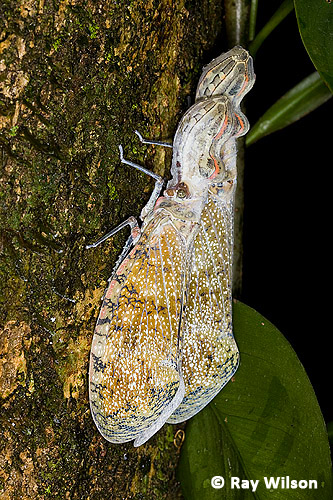 |
 |
Peanut-headed Lanternfly (Hemiptera: Fulgora sp.)
Lanternflies are a predominantly Asian family with only a few representatives found in South America. The species shown here is probably either F. laternaria or the very similar F. lampetris).
Another South American lanternfly is the Wax-tailed Hopper. The long wax secretions act as decoys for predators, as they break off and allow the bug to escape, leaving the would-be predator with nothing more than a mouthful of wax. There are some butterfly caterpillars that specialize in eating the wax secretions and spend all their time as larvae living on the back of the lanternfly.
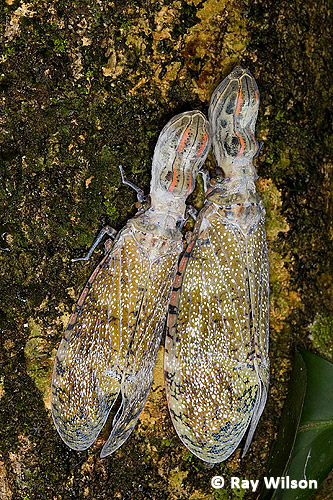 Peanut-headed Lanternfly |
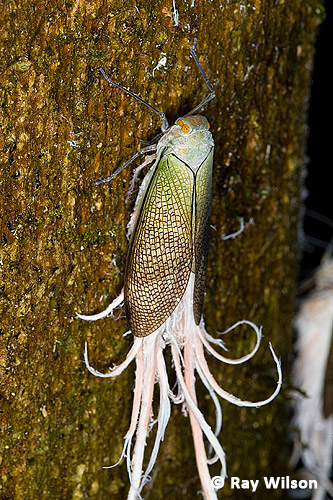 Wax-tailed Hopper |
Ants are very numerous in tropical rainforests. The famous entomologist E. O. Wilson (best known for his books on biodiversity, but is also one of the world's most respected authorities on ants) once found more species on a single tree behind the Explorer's Inn than are found in the whole of the British Isles!

Giant Bullet Ant (Panaponera clavata)
Some of the individuals I found were enormous! The biggest was the Giant Bullet Ant (Panaponera clavata) which is about 3cm in length. Bullet ants hunt indivdually and two are rarely seen together.
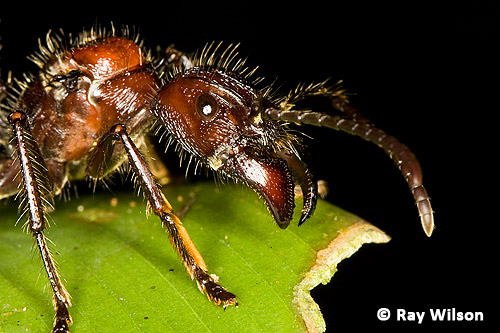
Giant Bullet Ant (Panaponera clavata)
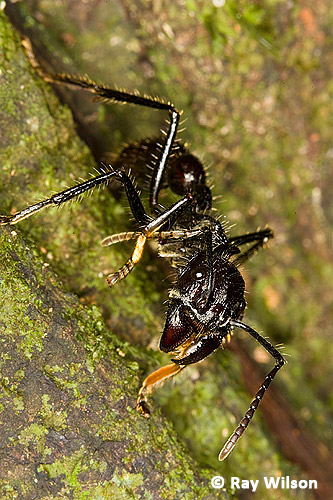 |
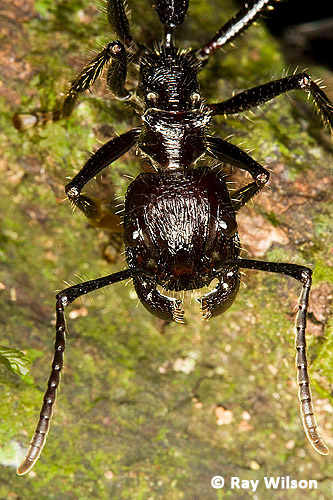 |
Giant Bullet Ant (Panaponera clavata)
Pachycondyla are another group of large ants which are mostly around 2cm in length.
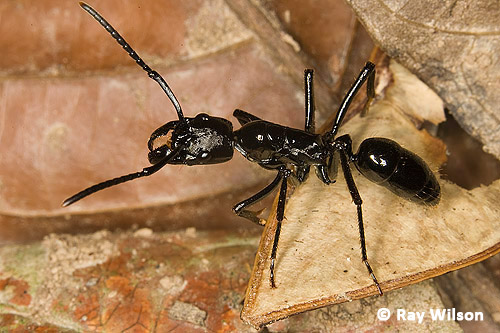
Pachycondyla sp.
Just outside my room I found a swarm of army ants industriously moving their bivouac with several of the workers carrying pupae.
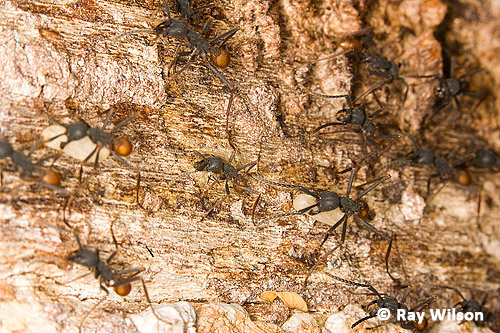
Army ants (Hymenoptera: Formicidae: Ecitoninae) carrying their larvae

unidentified ant (Hymenoptera: Formicidae)
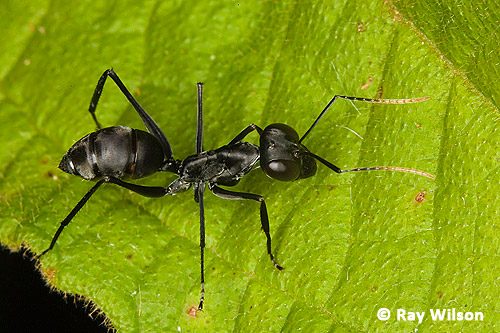
Gigantiops destructor
The enormous eyes of Gigantiops destructor are unique among the ants and renders this species unmistakable.
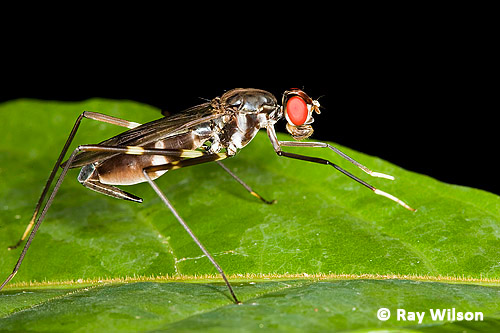
unidentified fly (Diptera : probably a Micropezidae sp.)
The large female bushcricket below was using its ovipositor to lay eggs inside the leaf.

Bushcricket/Katydid (Orthoptera) ovipositing
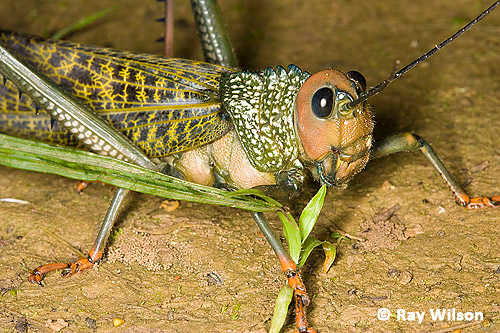
Very large grasshopper/locust (Orthoptera)
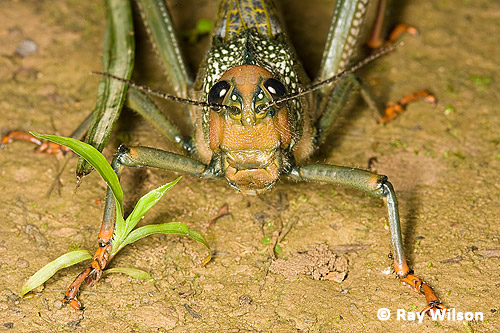
Very large grasshopper/locust (Orthoptera)
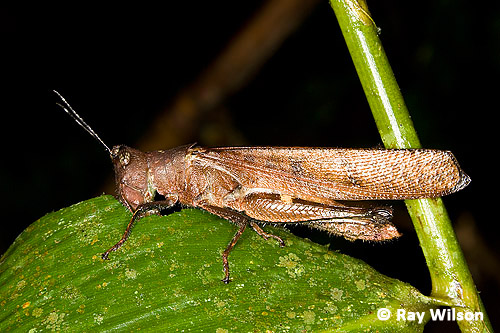
Grasshopper/Locust (Orthoptera)
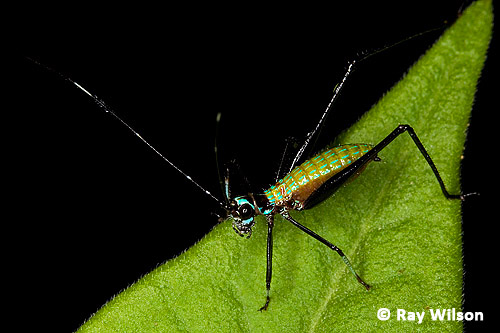
Bushcricket/Katydid (Orthoptera)
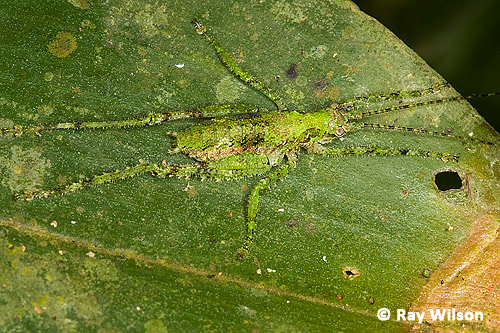
Bushcricket/Katydid (Orthoptera)
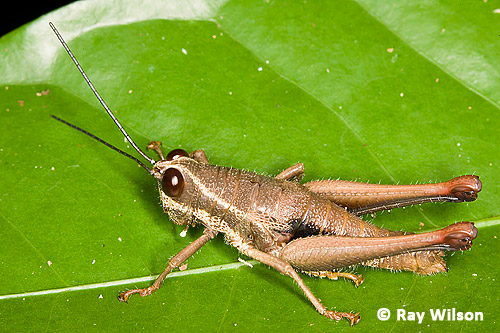
Grasshopper (Orthoptera)
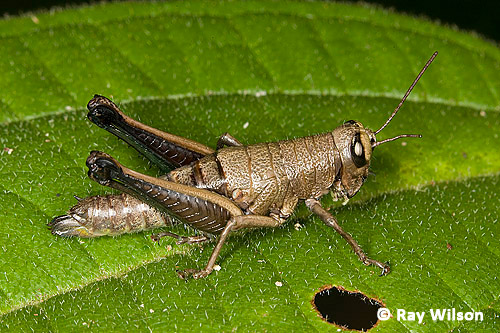
Grasshopper (Orthoptera)
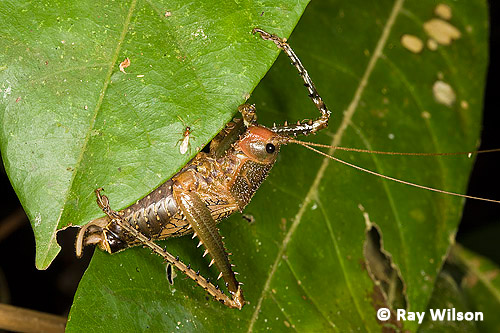
Bushcricket/Katydid (Orthoptera)
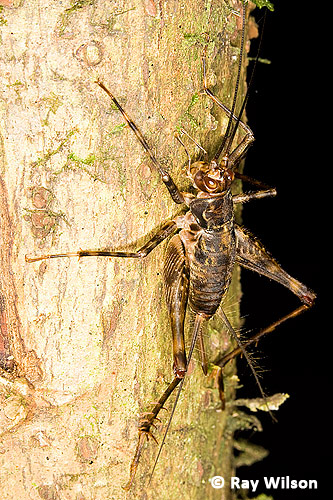
cricket (Orthoptera) |
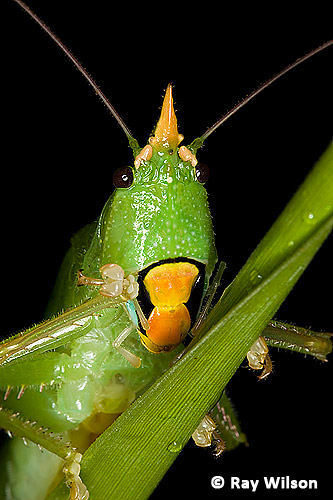 Bushcricket/Katydid (Orthoptera) |
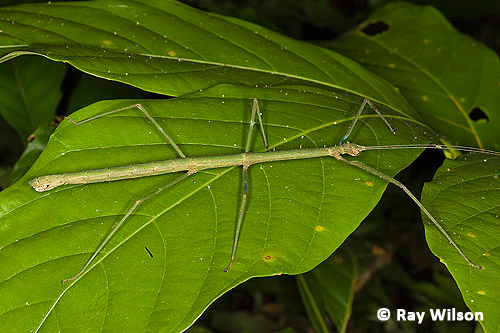
Stick Insect (Phasmida)
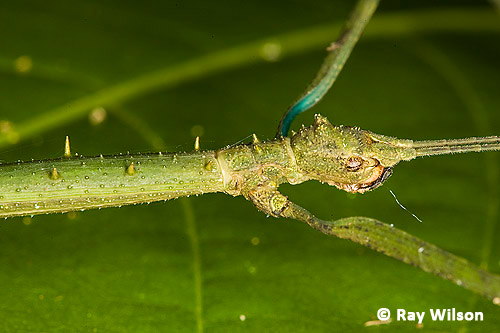
Stick Insect (Phasmida)
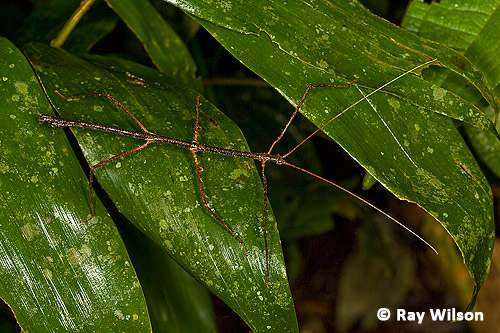
Stick Insect (Phasmida)
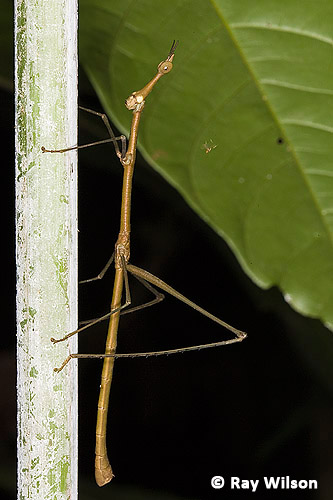 Stick Grasshopper (Proscopiidae sp.) |
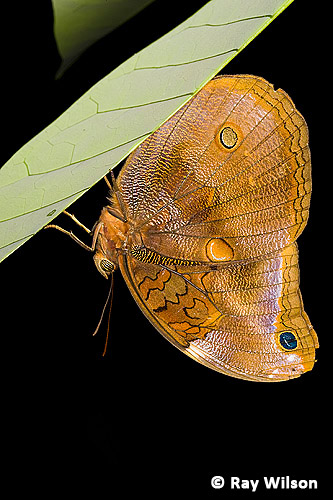 Roosting butterfly (Lepidoptera) |
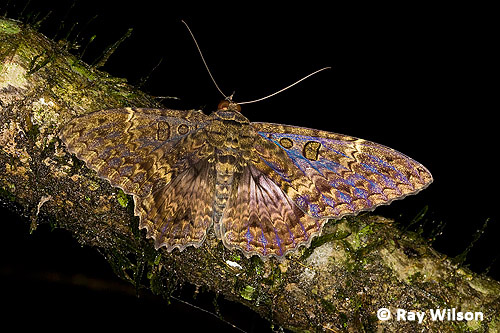
Birdwing Moth (probably Thysania agrippina)
On one of the palm trees outside of the dining room building, a massive tarantula had its nest. Its body would easily cover the palm of my hand and it had a horizontal leg span of at least 5 inches (12.5cm)! It would hide, perfectly concealed, during the day, but at night would emerge to hunt. This is a mature female. Young individuals of this species have distinctive red markings along the sides of their abdomen but these gradually darken with each successive moult. Females can live up to 12 years, while males have much shorter lives and only survive for up to 2.5-3 years.
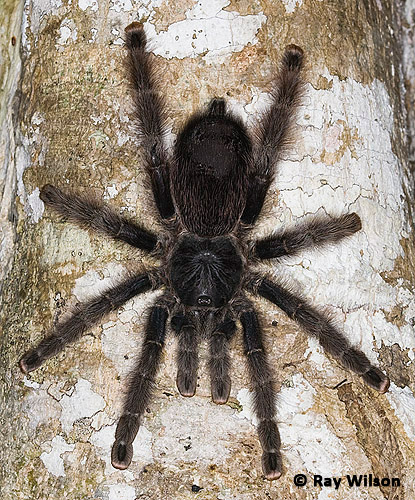 |
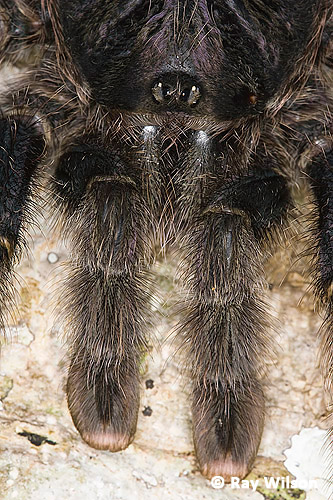 |
Peruvian Pinktoe (Avicularia urticans
Another tarantula fell/jumped out of a tree and landed on my boot while I was trying to photograph a treefrog! It was considerably smaller than the Peruvian Pinktoe but I had a difficult job getting a photograph of it. It was obviously a bit jumpy after its fall and was running all over the forest floor at extremely high speeds!
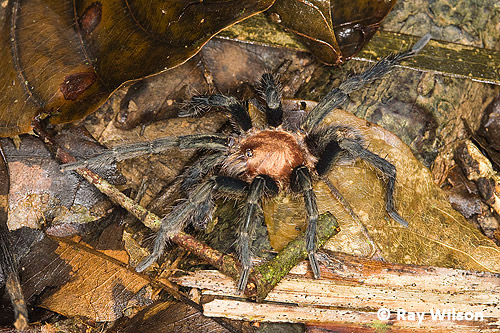
Tarantula (probably Cyriocosmus sellatus)
Large spiders were much in evidence throughout the forest on our night walks. This large male has an impressive pair of fangs!

unidentified male ground sac spider (Corinnidae)
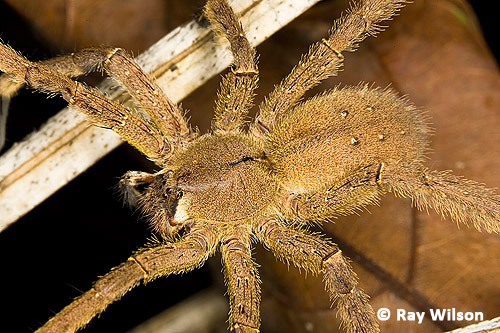
wandering spider (Ctenidae : probably Phoneutria boliviensis)
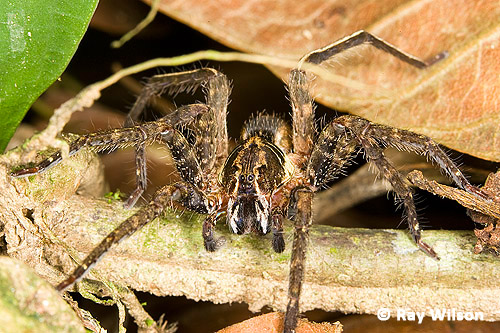
wandering spider (Ctenidae)
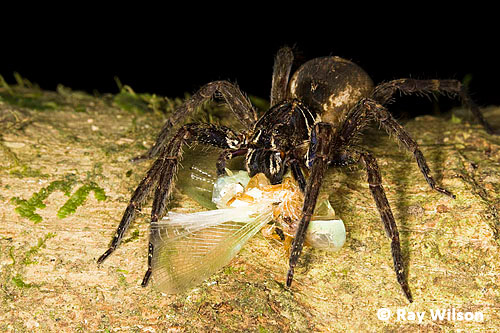
wandering spider (Ctenidae)
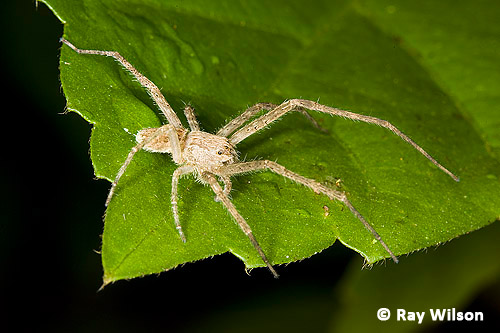
unidentified spider
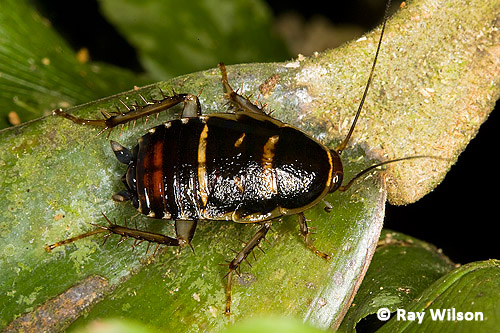
colourful cockroach nymph (Dictyoptera: Blattodea)
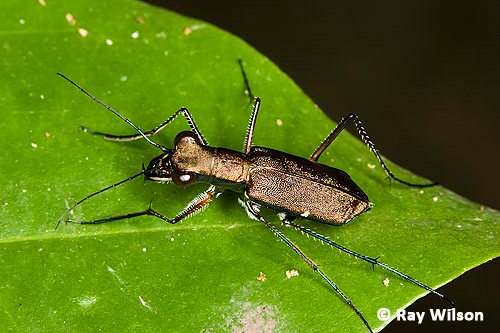
Tiger Beetle (Coleoptera: Cicindelidae)
The two bright spots at the rear of the thorax on the click beetle below were actually luminescent and glowed a bright green when it was not illuminated by a torch or flashgun.
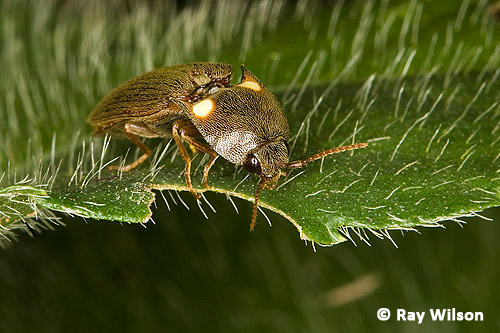
Click Beetle (Coleoptera: Elateridae : Pyrophorini sp.)

weevil sp. (Coleoptera : Curculionoidea)
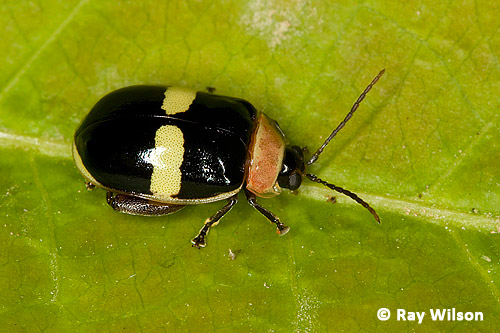
Flea Beetle sp. (Coleoptera : Chrysomelidae)
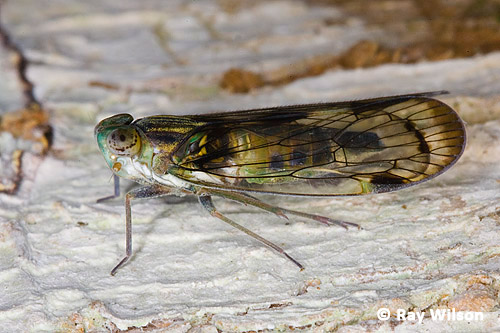
unidentified Planthopper (Hemiptera: probably a Cixiidae sp.)
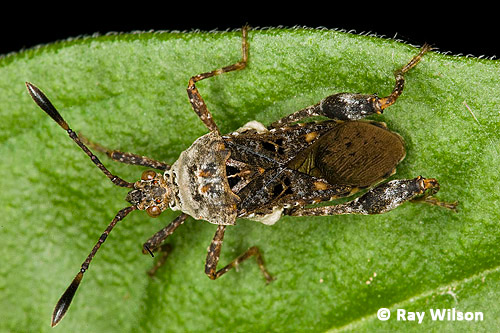
Unidentified bug (Hemiptera)
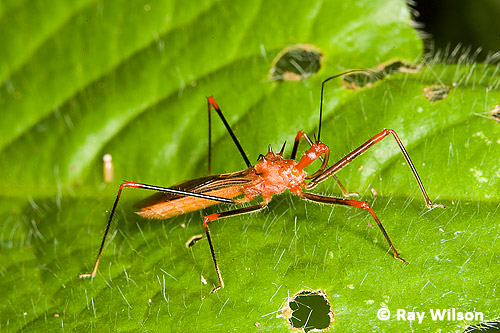
Unidentified bug (Hemiptera)

unidentified Froghopper (Hemiptera: Cercopidae)
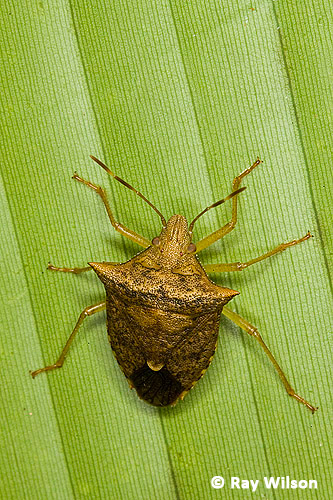 Shieldbug/stinkbug (Hemiptera: Acanthosomatidae) |
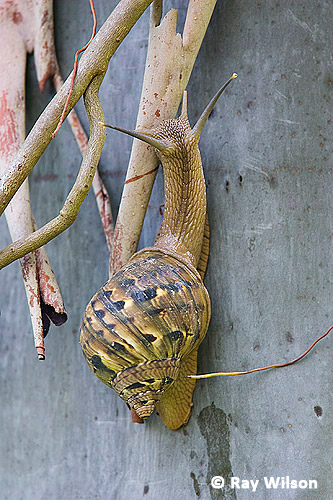 Large snail (Mollusca) |
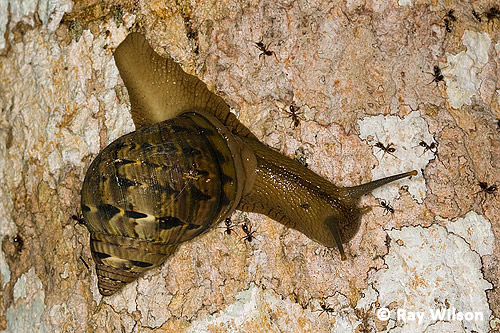
Large snail being attacked by ants
Ray Wilson owns the copyright of all images on this site.
They may not be used or copied in any form without prior written permission.
raywilsonphotography@googlemail.com